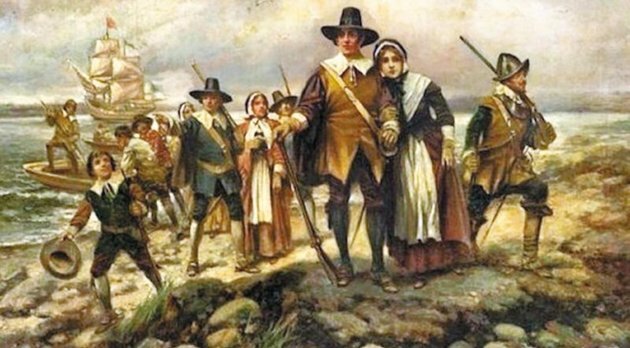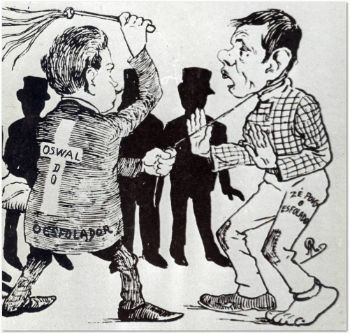THE Pernambuco insurrection was a movement that took place in Pernambuco, between 1645 and 1654, which culminated in the expulsion of the Dutch from Brazilian territory after years of domination in the region.
One of the main causes of the Pernambuco Insurrection was the high tax collection by the West India Company (Dutch company created with the aim of exploring colonies on the American and African continents).
Until 1644, the Dutch colonization in Pernambuco was managed by Jose Maurício de Nassau, providing loans to planters (who produced sugar).
With his resignation, these demands became abusive, which provoked indignation among Luso-Brazilians.
In addition, another factor that led to the outbreak of conflicts (the Pernambucan Insurrection is made up of several battles) was the religious persecution of Catholics.
Holland was a Calvinist country. In the context of the religious reforms, this meant a rivalry with Portugal and the Portuguese-Brazilians of the colony, due to the strong alliance of the Portuguese with the Catholic Church.
Between 1645 and 1654, the conflicts, which took place in several battles, had the participation of Portuguese, Luso-Brazilians, indigenous and Africans.
The main leaders of the confrontation, who helped to end the so-called “Dutch Brazil”, were the black Henrique Dias, the indigenous Filipe Camarão, the Portuguese-Brazilian Vidal de Negreiros and the Portuguese João Fernandes Vieira, a rich landowner.
Historical context and causes of conflict
Conflicts with Spain led Holland to occupy Brazilian territory during the 17th century.
The Dutch were prohibited from continuing to participate in the Brazilian sugar trade because of the Iberian Union (1580-1640).
THE Iberian Union it was a period of 60 years where the Spaniards politically dominated Portugal. With the death of D. Sebastião, the Portuguese throne was under the rule of Felipe II, of the Habsburg family.
The Spaniards, who were enemies of the Dutch, forbade them to trade with the Iberian Union and its colonies, directly affecting the partnership previously established between Portugal and Holland in the commercialization of sugar cane.
For this reason, the Flemings created the West India Company in 1624, a company that was responsible for the control and administration of the territory of northeastern Brazil, forming the so-called "Dutch Brazil".
West India Company and friction between Dutch and settlers: the trigger for the Pernambuco Insurrection.
The process of invasion and domination of the sugar regions was in charge of the West India Company (West-Indische Compagnie, in Dutch, with the acronym “WIC”).
The Dutch company, based in Amsterdam, was created in 1621 with the aim of exploring Portuguese colonies in the American and African continents.
Brazil was a major producer of sugarcane in this period, becoming a colony with the function of supplying the European market with tropical products.
In this context, Bahia and Pernambuco occupied the centers of the colonial sugar economy.
occurred two dutch invasions led by the Company, in different regions.
- In Bahia: in 1624 the Dutch occupied the territory, being expelled from the region the following year.
- In Pernambuco: longer lasting, between 1630 and 1654 the region of Pernambuco was dominated by the Dutch.
In Pernambuco, John Maurice of Nassau he was the most prominent administrator of the colony, promoting several improvements for the region.
Actions such as loans to planters, carrying out public works, practice of a certain religious freedom (limited, but outstanding) and the funding for the coming of several intellectuals to the region, who carried out scientific studies on the continent American.
In 1644, Nassau was removed from the administration of the colony, due to disagreements with the Company and the high expenses he committed to the construction of several public works.
Also in the same period, the price of sugar in the European market began to fall, leading the Company to charge of ingenuity the loans made during the Nassau administration, at interest that could reach a rate of 48% per year. year.
The settlers began to be oppressed by severe charges (from loans and taxes), as with the fall in the price of the product, they were unable to make their payments.
In addition to the charges, the Dutch began to interfere in Catholic practices. Holland, Calvinist, withdrew religious freedom from the colony of Nassau times.
The fear of losing their rural properties, slaves, cattle and other properties, due to non-payment of debts, resulted in the Pernambuco Insurrection.
Men like Henrique Dias, a freed black man, and Filipe Camarão, an indigenous leader from the state of Rio Grande do Sul, led planters, indigenous and African groups in a movement of resistance to colonization Dutch. Thus began, in 1645, the Pernambuco Insurrection.
As Portugal was in a truce with Holland, the Crown only started to actively participate in the from 1651, leaving the residents of Brazilian territory to face the Dutch in several battles.
Main battles of the Pernambuco Insurrection
Throughout the Pernambuco Insurrection, several battles took place, the most representative being:
- Battle of Monte das Tabocas: held on April 19, 1645, it was the first battle won by Luso-Brazilians.
- Battle of São Lourenço, or Battle of Tejucupapo: which took place on April 24, 1646, became known for the fact that 600 Dutch were defeated by the women of the village of Tejucupapo, since the men of the place would have gone to Recife to sell the production agricultural.
- Battles of Guararapes: two battles, one in 1648 and the other in 1649. Both lost by the Dutch.
- Battle of Campina Taborda: on January 26, 1654, it was the last fought between the rivals.
Battles of Guararapes (1648-1649)
Among those listed above, the most prominent were the two Battles of Guararapes, which took place on the Morro of the same name, between April 1648 and February 1649. In both the Dutch were defeated.
the first battle took place on the 18th and 19th of April. The Flemish had an army of 4,500 men, while the Luso-Brazilians had 2,200.
Despite the numerical and military advantage, the invaders did not have a knowledge of the territory as their enemies. In the end, 1,200 Dutch were killed, against only 84 for the local army.
the second battle took place on February 18, 1649. Also won by the local army, which killed approximately 2,000 enemies while losing just 47 men, it was instrumental in the Dutch weakening.
In the Battles of Guararapes, traditional historiography emphasizes the relationship of the “three races” (Europeans, indigenous and Africans) united in confrontation against the foreign invader.
This narrative is also reinforced by the Brazilian Army, whose foundation date is April 19, 1648, the day the first battle took place.
See more at: Battle of the Guararapes.
End of the Pernambuco Insurrection and the consequences for the colony
In 1654, after the various battles of the Pernambuco Insurrection, the Dutch signed their surrender.
However, they only agreed to withdraw from August 6, 1661, after the signing of a treaty called Peace of The Hague.
This agreement established that the so-called “Dutch Brazil” would be returned to the Portuguese after the payment of 8 million guilders to the Dutch (equivalent to 63 tons of gold).
This debt, however, was not paid, as the countries negotiated the exchange of some territories. Portugal ceded Ceylon (territory of present-day Sri Lanka), the Moluccas Islands (territory today in Indonesia) and some privileges in the sugar trade.
After the negotiations, the Dutch accepted Portuguese sovereignty in Brazilian and Angolan territory, where the Company had also exercised dominion.
As the Dutch were expelled from Brazil, they took to the Antilles, islands in Central America under their control, their knowledge for the cultivation of sugar cane.
Thus, Antillean production began to compete with Brazilian production, thus contributing to the sugar production crisis, until then the main export product.
Bibliographic references
NASCIMENTO, Rômulo Luiz Xavier do. Going down the slope. History Magazine, 2017. Available in:. Accessed on June 22, 2022.
PEREIRA, José Geraldo Barbosa. The Pernambuco Insurrection of 1645. Proceedings of the International Congress Atlantic Area of the Old Regime: powers and societies. n.d.
PIASSINI, Carlos Eduardo. The economy of colonial Brazil from the perspective of textbooks. Latin American Journal of History Vol. 2, no. 6, August
2013.
VILAÇA, Marcos Vinicius. Twice Guararapes (1648-1649). Culture Magazine, year VI. No. 10. P. 17
WEIMER, Gunter. Mauricio de Nassau: a controversial administrator. RIHGRGS, Porto Alegre, n. 151, p. 111-137, December 2016.


